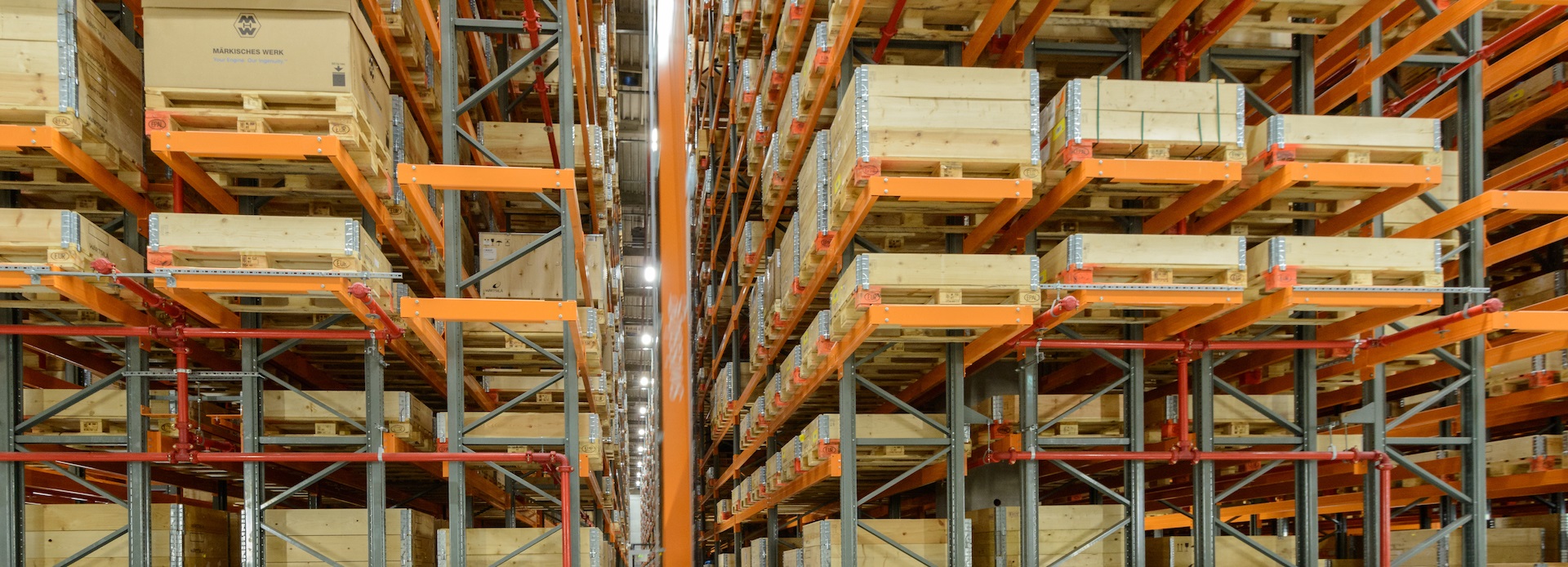

One day, Bart Blikman, Manager - Sustainability & Packaging at Wärtsilä’s Central Distribution Centre (CDC) in Kampen, the Netherlands, noticed something curious. They had received a shipment from a supplier, but the packing list wasn’t attached to the box in a plastic shipping bag as was usually the norm with the material they received.
“It was in a paper bag instead of a plastic bag,” Blikman explains. “I asked our team about the supplier and if we could talk to them about their paper bags.”
That event set off a chain reaction which saw Wärtsilä replacing thousands of packs of plastic wrapping with more sustainable options.
“Everyone was eager to help: our team, our supplier, their supplier. We received samples of these paper bags and set them outside in the rain as a test,” explains Blikman “After experiments and pilot projects we began using them. So far, we have replaced 220,000 plastic bags with paper. Changing one little thing can have a huge impact.”
There are advantages to using either paper or plastic with different manufacturing process helping mitigate the environmental impact of each material. In the case of CDC Kampen, choosing paper over plastic made for a more sustainable choice.
You can’t do something like this without the support of everyone involved. This movement includes everyone at Wärtsilä, our customers and suppliers.
3.5 tonnes of plastic and counting
CDC Kampen is an immense facility. Spread across 37,000 square metres, it holds 30 million pieces in stock and makes 140,000 deliveries annually to 180 countries. The CDC plays a critical role in providing spare parts to Wärtsilä’s customers, and Blikman is on a mission to make the facility as sustainable as possible. So far, both he and the CDC are on a roll.
In addition to using paper shipping bags, the facility last year replaced plastic labels and enough plastic tape to stretch from London to Luxembourg. Compared to 2021, they used 3.5 fewer tonnes of fossil fuel-based plastic.
“You can’t do something like this without the support of everyone involved,” Blikman says. “This movement includes everyone at Wärtsilä, our customers and suppliers.”
Cutting plastic use through partnerships
He cites the pilot programme with Carnival Cruise Line as an example. Wärtsilä and Carnival partnered to reduce plastic packaging for engine parts by replacing them with more eco-friendly materials. Across two pilot ships they reduced plastic packaging by 44%. In fact, Carnival was so pleased with the result that they detailed it in their 2022 Sustainability Report.
“The production of fossil fuel plastics releases greenhouse gases, and we don’t want old plastic to end up in landfills or oceans. Plastic might last hundreds of years, breaking down into microplastics and harming the environment,” says Blikman. “We work to replace these plastics with better materials of the same or improved quality.”
Sometimes the benefits of replacing plastic with more eco-friendly materials come from unexpected directions.
“It is safer to use paper bags,” Blikman explains. “Those old plastic bags were hard to open, so we often used knives, but sometimes an accident happened, and you cut yourself. Paper bags are easier to open, so you don’t need a knife. Efficiency and safety have improved.”
Our goal is to cut plastics sent to our customers 25% this year. We are fully supported by Wärtsilä’s executive management as well as our suppliers and customers, who are all part of the movement.
‘Let’s do it yesterday!’
The easiest way for Wärtsilä’s parts and supply management team to improve sustainability is to minimise waste. When they do have “waste” they try to find a new use for it with circular economy principles.
“We reuse wooden crates,” Blikman continues. “We check a used crate to see if it meets our quality requirements. If so, it is stored and reused. We began this in 2019 and now reuse about 3,000 crates per year.
“When you think about improving sustainability, you might think of cleaner fuels, but there are so many other things Wärtsilä is doing. We constantly develop new innovations such as refurbishing spare parts to increase their lifespan. We look at all aspects of our value chain.”
CDC Kampen has already made major improvements, but Blikman says they have barely gotten started. In one pilot project run this spring, they reduced plastic by 76% in a customer delivery. In another they replaced regular paper with recycled paper.
“Our goal is to cut plastics sent to our customers 25% this year,” says Blikman. “We are fully supported by Wärtsilä’s executive management as well as our suppliers and customers, who are all part of the movement. When we go to them with an idea to improve sustainability, they say. ‘Let’s do it yesterday!’”
2022 Sustainability Achievements at Wärtsilä’s CDC
- Introduction of paper labels (replaced 156,000 plastic labels, or 375 kg of plastic)
- Paper tape (replaced 451 km of plastic tape, or 846 kg of plastic)
- Paper bubble foil (replaced 5 km of plastic bubble foil, or 193 kg of plastic)
- Rope ty wraps (replaced 50,000 plastic ty wraps, or 83 kg of plastic)
- Paper shipping bags (replaced 220,000 plastic shipping bags, or 1100 kg of plastic)
- Paper address labels (replaced 90,000 plastic A4 document pouches, or 900 kg of plastic)
Did you like this? Subscribe to Insights updates!
Once every six weeks, you will get the top picks – the latest and the greatest pieces – from this Insights channel by email.